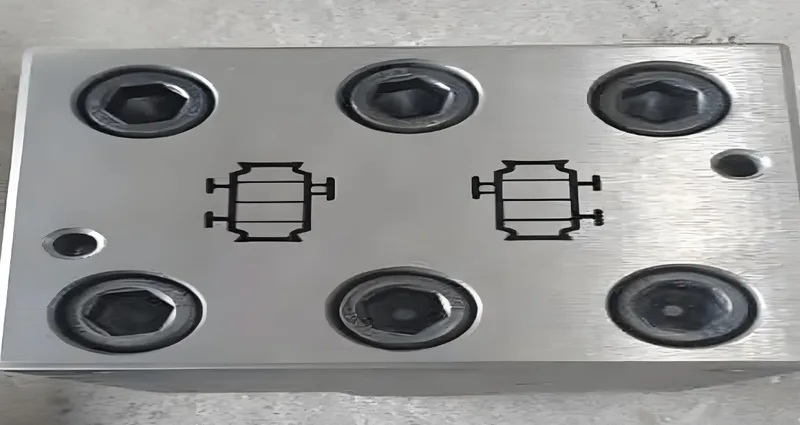CAD/CAM software transforms extrusion die design1 by merging precision modeling with automated manufacturing, enabling engineers to craft highly accurate dies that shape materials efficiently during extrusion.
CAD/CAM software integrates Computer-Aided Design (CAD) for creating detailed die models and Computer-Aided Manufacturing (CAM) for generating CNC instructions, streamlining the production of extrusion dies used in industries like construction and automotive.
Understanding how CAD/CAM enhances extrusion die design can optimize your workflow, cut costs, and elevate product quality. Let’s explore how this technology tackles everything from complex shapes to material compatibility.
CAD/CAM software reduces production costs in extrusion die design.True
By automating design and manufacturing, CAD/CAM minimizes errors and material waste, leading to significant cost savings.
CAD/CAM is only useful for simple die shapes.False
CAD/CAM excels at designing complex and asymmetrical die shapes that are difficult to achieve with traditional methods.
- 1. What Is CAD/CAM Software and How Does It Relate to Extrusion Die Design?
- 2. What Are the Key Steps in Using CAD/CAM for Extrusion Die Design?
- 3. How Does CAD/CAM Software Handle Different Materials in Extrusion Die Design?
- 4. What Are the Advantages and Disadvantages of Using CAD/CAM in Extrusion Die Design?
- 5. What Practical Tools and Checklists Are Available for CAD/CAM in Extrusion Die Design?
- 6. How Does CAD/CAM Integrate with Other Technologies in Extrusion Die Design?
- 7. Conclusion
What Is CAD/CAM Software and How Does It Relate to Extrusion Die Design?
CAD/CAM software is a cornerstone of modern manufacturing, especially for designing extrusion dies that shape materials into precise profiles.

CAD/CAM combines CAD for 2D/3D modeling and simulation with CAM for CNC programming2, making it indispensable for creating extrusion dies that shape materials like metals and plastics.
| Software Type | Function | Common Tools |
|---|---|---|
| CAD | 2D/3D modeling, simulation | Autodesk Fusion, SolidWorks |
| CAM | Tool path generation, CNC programming | Mastercam, Siemens NX |
Computer-Aided Design (CAD)
CAD software lets engineers design detailed 2D and 3D models of extrusion dies. These models can simulate material flow, ensuring the die produces the intended shape. Tools like QForm Extrusion Die Designer streamline this process by automating solid model creation for simulation.
Computer-Aided Manufacturing (CAM)
CAM takes CAD models and converts them into precise CNC machine instructions. This step ensures the die is manufactured accurately and quickly. Software like Autodesk Fusion with PowerMill shines here, offering advanced capabilities for high-speed and multi-axis machining.
In practice, CAD/CAM3 is used to design dies for applications like aluminum profiles in automotive manufacturing, where precision and lightweight materials are critical.
CAD/CAM is essential for complex extrusion die designs.True
It provides precise modeling and simulation tools vital for intricate shapes and uniform material flow.
CAD/CAM eliminates the need for physical prototypes.False
While it reduces prototyping needs, physical testing is often still necessary to validate designs.
What Are the Key Steps in Using CAD/CAM for Extrusion Die Design?
Using CAD/CAM in extrusion die design follows a structured workflow that ensures accuracy from concept to production.

The process involves designing the die in CAD, simulating material flow, generating CAM tool paths, and manufacturing the die with CNC machines4.
Design Phase (CAD)
Engineers begin by crafting a 3D die model in CAD, defining its geometry to match the desired extruded product. Simulation tools analyze material flow, spotting issues like uneven distribution early on.
Manufacturing Phase (CAM)
Next, CAM software generates tool paths for CNC machines based on the CAD model. This ensures the die is machined precisely from materials like tool steel. Tools like Mastercam excel in this phase with robust CNC programming features.
Testing and Validation
After manufacturing, the die undergoes testing during extrusion to confirm it meets specifications. Adjustments may loop back to CAD if issues arise, ensuring the final product’s quality.
CAD simulation catches all design flaws.False
Simulation identifies many issues, but some defects only surface during physical testing.
CAM ensures precise die manufacturing.True
Accurate tool paths from CAM reduce errors, ensuring the die matches the design specs.
How Does CAD/CAM Software Handle Different Materials in Extrusion Die Design?
Material compatibility is key in extrusion die design, and CAD/CAM adapts to the unique properties of each material.

CAD/CAM adjusts die designs based on material characteristics like viscosity and strength, supporting metals, plastics, and composites in extrusion processes.
Metals (e.g., Aluminum, Steel)
Metal extrusion demands durable dies. CAD designs include cooling channels and reinforcements, while CAM programs CNC machines to cut tough materials like steel accurately.
Plastics (e.g., PVC, Polyethylene)
Plastic extrusion requires smooth-flowing dies. CAD models feature tapered channels to manage molten plastic, and CAM adjusts machining for softer materials.
Composites
For composites with fibers, CAD/CAM designs dies to prevent clogging and ensure uniform distribution, adapting to their complex properties.
CAD/CAM can design dies for any material.True
With tailored adjustments, it supports a wide range of materials effectively.
All materials require identical die designs.False
Each material’s unique properties necessitate specific design tweaks.
What Are the Advantages and Disadvantages of Using CAD/CAM in Extrusion Die Design?
CAD/CAM brings clear benefits to extrusion die design, though it’s not without challenges.

Advantages include precision, speed, and complexity handling, while disadvantages involve upfront costs and training needs.
| Aspect | Advantages | Disadvantages |
|---|---|---|
| Precision | Exact design and manufacturing | Needs accurate input data |
| Time Efficiency | Quick design and production | Initial setup and training time |
| Cost | Long-term savings via less waste | High software and hardware costs |
| Complexity Handling | Ideal for intricate shapes | Steeper learning curve |
Pros
-
Precision: Ensures dies meet exact specs, boosting product quality.
-
Efficiency: Speeds up design and production with automation.
-
Flexibility: Allows easy design tweaks and rapid prototyping.
Cons
-
Cost: Requires significant initial investment in tools and software.
-
Training: Demands skilled operators to maximize benefits.
-
Dependence: Relies on technology, risking delays if issues arise.
CAD/CAM lowers overall production costs.True
Long-term efficiency and waste reduction offset initial expenses.
CAD/CAM suits every extrusion die project.False
Simple designs may not justify its use over traditional methods.
What Practical Tools and Checklists Are Available for CAD/CAM in Extrusion Die Design?
Practical tools and checklists streamline CAD/CAM use in extrusion die design, ensuring thoroughness and success.

Tools include design checklists for process limits and decision-making guides for selecting design approaches.
Design Checklist
-
Product Specs: Define shape, dimensions, and tolerances.
-
Material Needs: Match die design to material properties.
-
Flow Uniformity: Ensure even material distribution.
-
Simulation: Validate designs virtually before production.
-
Machinability: Confirm CNC compatibility.
-
Testing Plan: Prepare for physical validation.
Process Selection Decision-Making
Consider:
-
Shape Complexity: CAD/CAM shines for intricate profiles.
-
Production Volume: High volumes benefit from its efficiency.
-
Cost Analysis: Balance upfront costs with long-term gains.
A checklist is vital for die design success.True
It ensures all key factors are addressed, minimizing errors.
CAD/CAM is always the best choice.False
Simple or low-volume projects may favor traditional methods.
How Does CAD/CAM Integrate with Other Technologies in Extrusion Die Design?
CAD/CAM works hand-in-hand with related technologies to enhance extrusion die design.

It integrates with simulation software5, CNC machining, and inspection tools for a seamless design-to-production process.
Simulation Software
Tools like QForm Extrusion predict material flow, optimizing designs virtually.
CNC Machining
CNC machines, driven by CAM, manufacture dies with precision. Siemens NX supports complex machining tasks.
Inspection Tools
Post-production, inspection tools verify die accuracy, integrating with CAD/CAM for quality assurance.
Simulation is key to CAD/CAM success.True
It reduces physical trials by optimizing designs virtually.
CNC machining is optional.False
It’s critical for the precision modern dies require.
Conclusion
CAD/CAM software is a game-changer in extrusion die design, delivering precision, efficiency, and versatility. It’s a must-have for industries shaping materials with complex dies, from automotive to construction.
-
Explore how CAD/CAM software revolutionizes extrusion die design, enhancing precision and efficiency in manufacturing processes. ↩
-
Learn about CNC programming in CAD/CAM software and its critical role in ensuring accurate and efficient manufacturing of dies. ↩
-
Explore how CAD/CAM enhances precision and efficiency in extrusion die design, making it a game-changer for engineers. ↩
-
Learn about the role of CNC machines in ensuring accurate die manufacturing, crucial for high-quality production. ↩
-
Learn about the importance of simulation software in optimizing designs and ensuring material flow in CAD/CAM applications. ↩









